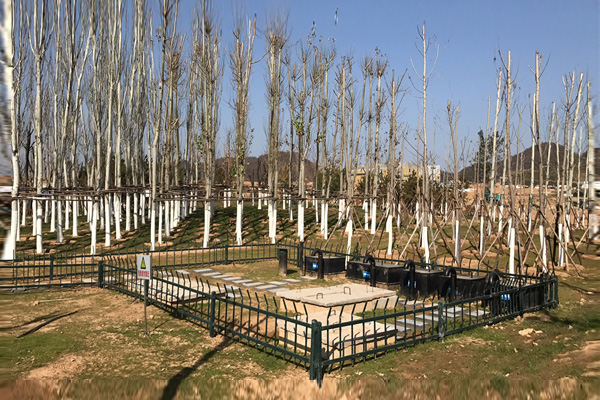
Case study of wastewater treatment in a palm oil factory in Malaysia
Cases Information
Background introduction
Palm oil wastewater mainly comes from oily wastewater generated during palm oil pressing, refining, and food processing. This type of wastewater contains high concentrations of oil, suspended solids, organic matter, etc. If discharged directly without treatment, it will cause serious pollution to the environment. Therefore, adopting efficient and stable wastewater treatment technologies is particularly important. Ceramic membranes are widely used in industrial wastewater treatment, especially in palm oil wastewater treatment, due to their excellent acid and alkali resistance, high mechanical strength, and high separation accuracy.
1、Preprocessing unit
Grid: Firstly, palm oil wastewater is treated with a grid to remove large particles and suspended solids, reducing the load on subsequent treatment units.
Regulating tank: Wastewater enters the regulating tank for homogeneous and uniform treatment, ensuring the stability of subsequent treatment processes.
Mesh bag filtration: further removes fine suspended solids and impurities from wastewater, improving wastewater quality.
2、Ceramic membrane filtration unit
Membrane selection: Inorganic ceramic membranes are used for filtration, with membrane elements made of high-temperature sintered materials such as alumina and titanium oxide, and precision ceramic filtration materials with porous structures.
Cross flow filtration: In the process of membrane filtration, the cross flow filtration method is adopted, which means that the raw material liquid flows at high speed in the membrane tube. Under pressure, the clear permeate containing small molecular components passes through the membrane in the vertical direction, while the large molecular components and impurities are intercepted. By optimizing the flow rate (such as 15m/s), the membrane surface shear force is ensured to be moderate, avoiding blockage while maintaining a high permeability.
Operating conditions: Control the operating pressure difference, temperature, and other conditions to ensure the stable operation of the ceramic membrane. In this case, the equipment parameters were controlled at a pressure of 0.1 MPa, a flow rate of 15 m/s, and a stable permeability of 130 L/h.m ², meeting the processing requirements.
3、Post processing unit
Adding alkali to adjust pH value in the collection tank: Transport the membrane treated water to the collection tank and add an appropriate amount of alkali to adjust the pH value, preparing for subsequent biochemical treatment.
Biochemical treatment: Further removal of organic matter from wastewater through microbial degradation. The biochemical treatment unit adopts mature microbial technologies, such as activated sludge process or biofilm process.
Deep treatment: The effluent after biochemical treatment enters the deep treatment unit, and the water quality is further improved using coagulation and other processes to ensure that the effluent meets the discharge standards.
4、Cleaning unit
Cleaning process: Due to long-term operation, a certain amount of impurities will be adsorbed on the surface of the ceramic membrane, resulting in a decrease in permeability. Therefore, it is necessary to regularly clean the ceramic film. This case adopts the acid-base composite cleaning method, which first cleans with 1.6% NaOH for 15 minutes, then cleans with 2% HNO3 for 15 minutes, and finally tests with clean water. Through this cleaning process, the membrane permeability can be restored to over 90% of its initial value, meeting the requirements for industrial applications.
Processing effect
After the above treatment process, the oil, suspended solids, organic matter, etc. in palm oil wastewater have been effectively removed, and the effluent quality meets the national discharge standards. At the same time, the treatment system has the advantages of stable operation, high treatment efficiency, and low maintenance costs, providing an efficient and feasible solution for palm oil wastewater treatment.
summary
Ceramic membrane technology has shown good application effects in palm oil wastewater treatment. Its excellent acid and alkali resistance, high mechanical strength, and high separation accuracy make it have broad application prospects in the field of industrial wastewater treatment. By optimizing the process flow and operating conditions, the treatment efficiency and water quality stability can be further improved, contributing to the environmental protection cause.

| Email: | kf@zhixingtian.com |
|---|---|
| phone: | 021-3765 5161 021-3355 5161 |
| address: | 2nd Floor, No. 1, Lane 599, Guangfulin Road, Shanghai |

